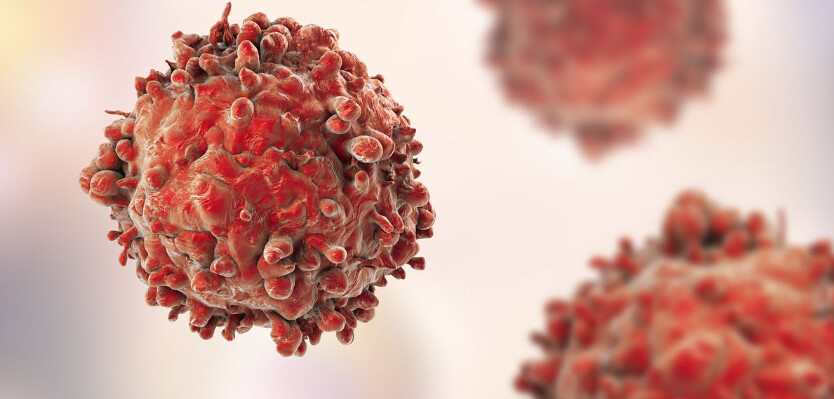Source: Medical Express
Cancer is a nasty disease. Cells which have been hijacked are out of control of the human system and are under the control of the cancer. If a single cell were out of control, then the body's natural immune system would kill the cancerous cell. The cells in the body responsible for doing so are the white blood cells. Specifically, the cytotoxic T cells as introduced by Wikipedia page as follows:
A cytotoxic T cell (also known as TC, cytotoxic T lymphocyte, CTL, T-killer cell, cytolytic T cell, CD8+ T-cell or killer T cell) is a T lymphocyte (a type of white blood cell) that kills cancer cells, cells that are infected (particularly with viruses), or cells that are damaged in other ways.Most cytotoxic T cells express T-cell receptors (TCRs) that can recognize a specific antigen. An antigen is a molecule capable of stimulating an immune response, and is often produced by cancer cells or viruses. Antigens inside a cell are bound to class I MHC molecules, and brought to the surface of the cell by the class I MHC molecule, where they can be recognized by the T cell. If the TCR is specific for that antigen, it binds to the complex of the class I MHC molecule and the antigen, and the T cell destroys the cell.In order for the TCR to bind to the class I MHC molecule, the former must be accompanied by a glycoprotein called CD8, which binds to the constant portion of the class I MHC molecule. Therefore, these T cells are called CD8+ T cells.
What does this recognition and destroying process look like in real time? Here is a short video (less than a minute in length) outlining the process with animation:
Nice - right? With the progress that has been made, one would naturally wonder why cancer has not been eradicated all together. The short answer is that there are many different forms of cancer. Cancer is dynamic and constantly changing up to overcome destruction and prevention. Although, some cancers have been successfully eliminated.
This is a short stop (brief post) in a complicated disease and topic to cover. In future posts, more will be said of research being conducted to eliminate cancers and successful efforts along with failures. Failures are really not failures, but learning steps in the path of understanding how different cancers arise, take over cells, and successfully evolve to avoid destruction. That is a broad overview of the problem. Of course, when we consider that each person is unique in their genetic make up, then the consideration of cancer (as a disease) becomes even more exponentially more complicated. With that being said, the work toward understanding and overcoming the disease is worth every step taken in science -- research and discovery. More to come on this fascinating and terrible disease.
Related Blog Posts:
A Virtual Tour Of A Human Cell?
A Virtual Tour Of A Plant Cell? Really?
NIAID Director Anthony Fauci: How Should We Communicate About Crises?
NIH Director Francis Collins Makes A Statement Regarding Sexual Harassment In Science
National Institutes of Health - Anti-Sexual Harassment Web site
National Science Foundation Sexual Harassment of Women Study
Thoughts: What Does National Institute of Health Director Francis Collins get asked in front of Congress?
Parameters: What is the 'mission' of the National Institute for Aging?
NIH Director Updates Congress On Research Progress
Dr. Francis Collins and Bill Gates Discuss Global Health And Genomics
How Much Do New Drugs Cost To Bring To The Pharmacy Counter?
Is Disease Or Treatment Different In Women?
Unraveling The Resistance Of Antibiotics!
How Do Chemists Discover New Drugs? A Brief Introduction!

No comments:
Post a Comment